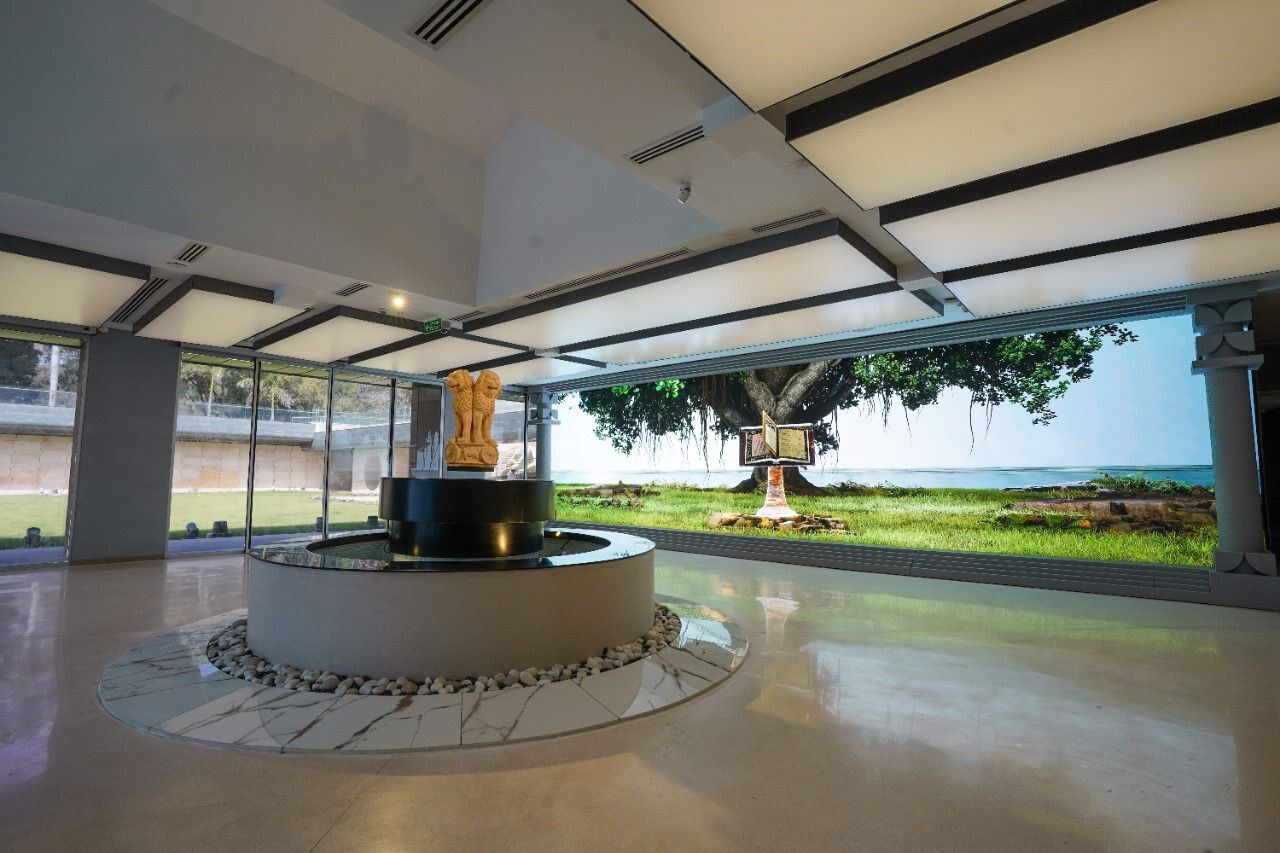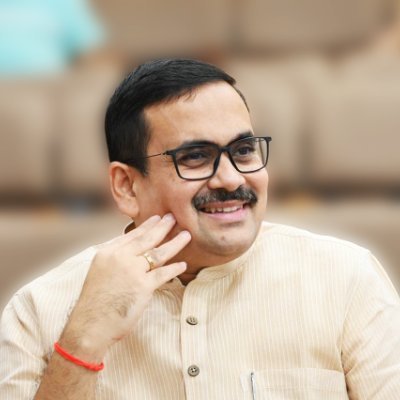Government has been creating an ambience for acknowledging the efforts of heroes who led the cause of independence and nation-building, irrespective of their affiliations
Early in January 1905″, wrote historian AC Bose, in his opus ‘Indian Revolutionaries Abroad’, “a journal with a rather unfamiliar name, ‘The Indian Sociologist’ made its first appearance in London. Few Londoners would have taken any notice of it, but to its editor and publisher Shyamji Krishnavarma and his associates it meant the beginning of a fresh campaign for India’s independence.” A perusal of Krishnavarma’s writings in ‘The Indian Sociologist’ reveals his core political stance which was that “if the use of force appeared to be the only effective means of achieving freedom it would be neither immoral nor repugnant to him”.
It was through this journal, subtitled ‘An organ of freedom and political, social and religious’, argues historian TS Sareen, that Shyamji “pleaded for full self-government for India which differed from the Congress aim of securing more seats in the Councils and more posts in Government service.” Sareen describes how, in a span of two years, Shyamji “succeeded not only in initiating a powerful anti-British movement abroad, but also established close links with extremists in India” and “became a pivot around which all revolutionary elements abroad revolved.”
The British government of India had then noted that Shyamji’s political views were “avowedly very extreme and anti-British” and “his influence over those in India who held similar views was very considerable.” An exasperated HH Risley, then Home Secretary, exclaimed that the “operations of the professional sedition-mongers were far more widespread, far better organised and far more advanced than those of the professional criminals” and that “after the success of the propaganda of Shyamji the range of activities of the Indian revolutionaries encompassed ‘England, America and Paris’…” Shyamji also succeeded in enlisting the sympathies and support of the Irish and Egyptian nationalists in his struggle against the British and was “the first of the most prominent Indian leaders to publicly demand absolute independence” and to declare “that as nothing short of this ideal could be the political aim of a nation, especially of India, she could never come to her own, never win political freedom without embarking on a relentless war, having recourse to force.”
Yet for over 50 years after independence, those who led India and passed themselves off as the sole inheritors of the legacy of her freedom struggle, forgot all about the formidable Krishnavarma’s last wish of seeing his ashes interred in a free India. That wish lay unfilled, unattended for over five decades until 2003, when Narendra Modi, then in his second year as Chief Minister of Gujarat, made an epic effort to repatriate the revolutionary’s ashes. Krishnavarma’s ashes were taken around across Gujarat, it was a befitting home-coming for one, who had popularised and embedded the aspiration for India’s freedom in some of the leading minds and movement in the West and had imparted to India’s struggle for freedom intellectual heft and political theory.
Modi did not rest with simply repatriating Krishnavarma’s ashes, a grand memorial was planned, designed and erected in Krishnavarma’s ancestral village in Mandvi, Kutch. In December 2010, Narendra Modi inaugurated the grand memorial to Krishnavarma. In a sense, this was the first landmark in giving India’s revolutionary nationalists their due, in recognising their undeterred contribution to achieving independence and to their vision of a free India. The Shyamji Krishnavarma Memorial – Kranti Teerth – and the whole effort to repatriate his ashes, became a model, a pointer on how the narrative of India’s freedom struggle ought to be recalibrated, revisited and restated. That effort by Narendra Modi as Chief Minister of Gujarat, assumes greater significance today, when India is commemorating the 75th anniversary of independence. If Gujarat was Modi’s primary field of experimenting with creative governance, straddling various fields and dimensions, then the Shyamji Krishnavarma memorial and repatriation effort was a deeply significant one. It indicated his vision and belief in how omitted, marginalised and forgotten episodes and personalities, who have contributed to the creation of the India narrative, ought to be reinstated in the India story and India dream that he was shaping in those early years in office.
The unbiased scholars and history aficionados who have followed Prime Minister Narendra Modi’s trajectory of achievements would have noted his interest in preserving the various dimensions, especially the forgotten or marginalised ones, of our freedom movement and of the overall Indian narrative, both civilisational and modern. The iconic statue dedicated to Sardar Patel, the relaying and consecration of the Samadhi of Adi Shankaracharya, the epochally creative face-lift and creation of the Kashi Vishwanath Corridor, the National Salt Satyagraha Monument at Dandi, the renovated Jallianwala Bagh Memorial, the Gandhi Museum at the Alfred High School in Rajkot, the Biplabi Bharat Gallery in Kolkata dedicated to revolutionary nationalists and forgotten freedom fighters, the INA Museum in the Red Fort and the latest, Pradhan Mantri Sangrahalaya (Prime Minister’s Museum), in Delhi dedicated to all Prime Ministers of India and to their achievements are in line with that core fundamental interest and imagination that Modi nursed for restating the essence and truth of India’s journey for independence and from independence.
Those who have visited the Salt Satyagraha monument years ago, for instance, can now discern the difference. A nondescript, perfunctory memorial that meekly stood out amidst that historic landscape has now been converted into an inspiring, aesthetically moving, technology friendly, futuristic and organically artistic monument with space for recreation and reflection. What strikes one is also how the names of each of those Satyagrahis who had marched with the Mahatma to Dandi has also been literally carved in stone for posterity, never before was this done in this manner.
The latest addition to this series of narrative recalibrating edifices, the Pradhan Mantri Sangrahalaya – its appealing tech-savvy and friendly set up, its inviting, creative and futuristic design, its narrative, its amalgamation of the past as well as of the future which will very spontaneously attract and captivate the interests of the masses – should also be seen and understood under this rubric. Narendra Modi is the only Prime Minister who has displayed the magnanimity and sagaciousness of speaking of the contribution of all Prime Ministers since independence. He has referred to this from the ramparts of the Red Fort. The usual practice was to obliterate the names of other Prime Ministers, that is, all those who were not products of the Congress dynasty. At the inauguration of the Prime Ministers’ Museum PM Modi referred, once again, to how “each government formed in independent India has contributed in taking the country to the height it is at today.” He also indicated one of the core messages of the museum, which was to radiate confidence among the youth of the “country that even a person born into an ordinary family can reach the highest position in the democratic system of India.”
In fact, each of these museums, monuments, commemorative spots and centres that have come up or have been redone since 2014, possess and broadcast fundamental messages. In the making of a new India, in the shaping of India’s Swaraj towards its centenary, it is essential that lasting tribute is paid to all those who have fundamentally altered or shaped India’s trajectory towards freedom and beyond it. That tribute and commemoration is now breaking out of the confines of one family and the control of its committed ideologues and chroniclers.
The Prime Ministers’ Museum, like so many of PM Modi’s such initiatives, has also broken, once for all, the sense of entitlement that infected and drove the shaping of the narrative of post-independent India’s history. That is its principal symbolism.
(The writer is a Member, National Executive Committee (NEC), BJP, and the Hony. Director of Dr Syama Prasad Mookerjee Research Foundation. Views expressed are personal)
This article was published in Millenium Post on 26th April 2022
(The views expressed are the author's own and do not necessarily reflect the position of the organisation)


